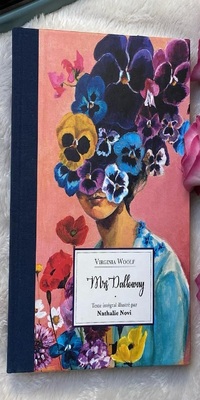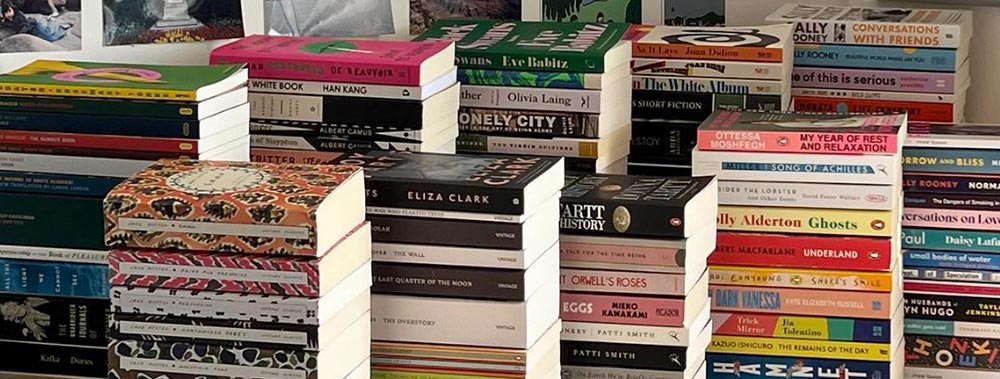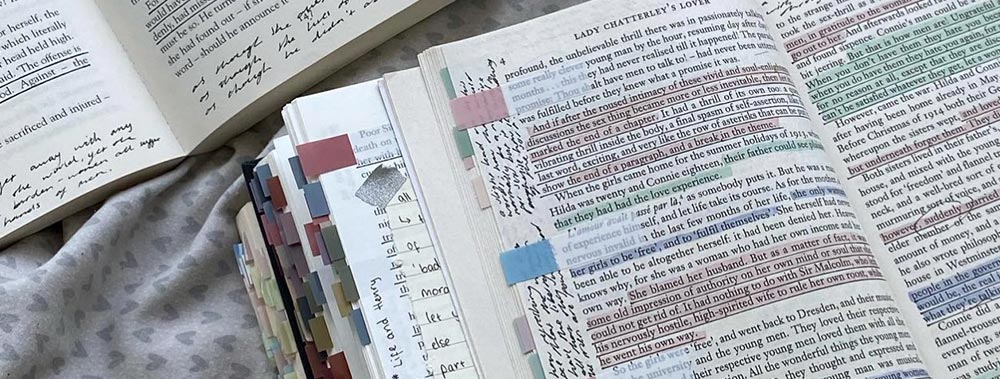Mrs Dalloway: Summary, Plot, Characters, Literary Analysis & More
“Mrs. Dalloway,” a novel by Virginia Woolf, was first published in 1925.
This iconic example of modernist literature stands as a testament to Woolf’s prowess.
The story revolves around Clarissa Dalloway, an upper-class woman preparing for a party.
Set against the backdrop of post-World War I England, the narrative interweaves the lives of characters like Septimus Warren Smith, who grapples with the trauma of war, and Peter Walsh, Clarissa’s former suitor.
Through the innovative use of stream of consciousness, Woolf delves into thoughts about life, death, and societal constraints.
The novel’s exploration of social class, psychological struggles, and personal connections showcases Woolf’s masterful storytelling and deep insights into human nature.

The novel's exploration of social class, psychological struggles, and personal connections showcases Woolf's masterful storytelling and deep insights into human nature.
Table of Contents
Summary The Plot Characters Key Themes Genres Language used Literary devices Summing upThe Plot
“Mrs. Dalloway” by Virginia Woolf, set in post-World War I London, follows Clarissa Dalloway, a perfect hostess of the upper class, as she prepares for a party.
The narrative, entwined with stream of consciousness, delves into her reflections on her life, past suitor Peter Walsh, and the effects of World War I.
Meanwhile, war veteran Septimus Warren Smith’s struggles with shell shock offer a contrasting perspective. Woolf’s exploration of societal norms, trauma, and human connections shapes this intricate tale.
Characters
Within Virginia Woolf’s renowned novel, “Mrs. Dalloway.” an array of characters comes to life, each with their own distinct voices, desires, and complexities.
From the enigmatic Clarissa Dalloway herself to the diverse cast of supporting characters, this section provides information relating to the characters and the role they play within the novel.
Clarissa Dalloway
In Virginia Woolf’s “Mrs. Dalloway,” Clarissa an upper-class woman, orchestrates a party while contemplating societal roles, her past with suitor Peter Walsh, and the effects of World War I, offering a glimpse into the inner workings of an upper-class mind through the stream of consciousness technique.
Septimus Warren Smith
Septimus Smith, a war veteran in the same narrative, embodies the post-traumatic stress of World War I, struggling with shell shock and traumatic memories that contrast sharply with Clarissa’s world, reflecting on the war’s toll on individuals’ mental states and societal reintegration.
Peter Walsh
Peter Walsh, a former suitor of Clarissa Dalloway, resurfaces, offering a contrasting perspective on the choices made in their lives and evoking memories of their shared past.
Sally Seton
Sally Seton, Clarissa’s close friend from her youth, represents a radical departure from societal norms and traditional gender roles, serving as a symbol of freedom and unconventionality.
Sir William Bradshaw
He is a prominent psychiatrist who treats Septimus Warren Smith, a war veteran suffering from shell shock and psychological trauma. Sir William Bradshaw represents the medical establishment and its approach to mental health during that time period.
Richard Dalloway
Richard Dalloway, Clarissa’s husband, navigates the complexities of marriage and societal expectations, contributing to the exploration of the dynamics of upper-class life and personal fulfillment.
Hugh Whitbread
Hugh Whitbread, a friend of Clarissa’s, embodies the shallowness of the upper-class society, his presence highlighting the contrast between surface-level interactions and deeper introspection.
Lady Bruton
Lady Bruton, a high-society hostess, stands as an emblem of the upper class and its values, reflecting the intricacies of social hierarchy and its impact on characters’ lives.
Dr. Bradshaw
Dr. Bradshaw, a prominent psychiatrist, represents the medical and psychological aspects of the narrative, overseeing Septimus Warren Smith’s treatment and highlighting the societal response to mental health issues.
Miss Kilman
Miss Kilman, Elizabeth’s tutor, represents a more humble background and displays religious zeal, providing a stark contrast to the upper-class characters and their views.
Elizabeth Dalloway
Elizabeth Dalloway, Clarissa’s daughter, signifies the generational shifts and challenges faced by younger individuals as they navigate their own identities within the confines of societal norms.
Key Themes
“Mrs. Dalloway” explores themes of time, memory, and the inner lives of characters.
The novel delves into the passing of time and how individuals grapple with memories of the past. Clarissa’s party serves as a central event, symbolizing the intersection of personal histories and societal expectations.
The contrast between the external world and characters’ internal thoughts highlights the complexity of human experience.
Time and Its Effects
“Mrs Dalloway” intricately examines the passage of time and its impact on characters’ lives. The narrative unfolds over a single day, revealing the characters’ thoughts and experiences.
The past haunts them, reflecting the way time shapes perceptions, decisions, and personal histories.
Memory’s Influence
Memory is a central theme, shaping characters’ identities and choices. Clarissa’s reminiscences reveal her past’s significance, while Septimus is haunted by traumatic war memories.
The juxtaposition of memory and present events showcases how individuals grapple with the past’s weight.
Inner Lives of Characters
The novel delves into characters’ inner thoughts, feelings, and perspectives. Stream of consciousness grants insight into their minds, revealing their insecurities, desires, and complexities.
This theme highlights the rich internal worlds concealed beneath the façades they present to society.
Genres in Mrs Dalloway
The novel can be categorized as both modernist literature and psychological fiction.
Its stream of consciousness narrative technique grants readers intimate access to characters’ thoughts, feelings, and memories, contributing to the psychological depth of the story.
The novel also presents a day in the life of its characters, falling under the genre of a character-driven slice-of-life narrative.
“Mrs. Dalloway” by Virginia Woolf is a quintessential work of modernist literature and a prominent example of psychological fiction due to its innovative narrative techniques and its profound exploration of characters’ inner thoughts and emotions.
The Modernist Literature Genre
One of the defining features of modernist literature is the use of the stream of consciousness narrative technique.
“Mrs. Dalloway” exemplifies this approach by presenting characters’ thoughts, memories, and perceptions in a continuous flow, mirroring the fluid and often disjointed nature of human consciousness.
The narrative jumps from character to character, reflecting the fragmented nature of modern life and thought.
In addition, Modernist literature often challenges traditional narrative structures.
“Mrs. Dalloway” embraces fragmentation by presenting a mosaic of perspectives and experiences.
This reflects the shattered post-World War I world and the sense of disorientation and alienation in society.
The Psychological Fiction Genre
“Mrs. Dalloway” is deeply concerned with the psychology of its characters.
The novel not only presents their surface actions and dialogues but delves into their minds, examining the motivations and conflicts that drive their behaviors. The characters’ internal struggles and emotions are central to the narrative.
The stream of consciousness technique serves as a window into characters’ minds, allowing readers to experience their thoughts and emotions firsthand.
This approach immerses readers in the characters’ inner worlds, fostering empathy and understanding of their psychological states.
Language used in Mrs Dalloway
Virginia Woolf’s language in “Mrs. Dalloway” is marked by its poetic prose and intricate detailing, evoking the nuances of characters’ emotions and the atmosphere of post-war London.
Descriptions of Clarissa’s party, interactions with Lady Bradshaw, and moments like when Peter asks Clarissa reflect the multifaceted narrative approach.
The writing captures a day in the life of characters, capturing the interplay between their internal worlds and external events.
Literary devices in Mrs Dalloway
Woolf masterfully employs stream of consciousness to delve into characters’ inner thoughts, weaving an intricate tapestry of perspectives.
Through the lens of Clarissa’s party, Lady Bradshaw’s presence, and Peter’s inquiries to Clarissa, the narrative intricately fuses character introspection with external events.
Woolf’s expert use of symbolism, juxtaposition, and vivid imagery enhances the exploration of societal norms and human complexities.
Similes
Clarissa’s refusal to acknowledge her feelings is likened to “a cloak” veiling her true emotions.
Dr. Holmes, in his medical pursuits, is compared to “a cook” creating medicinal recipes.
These similes deepen readers’ connection to the characters and their hidden struggles, heightening the story’s emotional resonance.
Metaphors
Metaphors in “Mrs. Dalloway” add layers of meaning.
Clarissa reflects on life’s transience, comparing it to “a clock” ticking away. The presence of Doris Kilman, representing societal constraints, is metaphorically depicted as “a thorn” in Clarissa’s side.
Metaphors amplify the novel’s exploration of human nature, revealing underlying tensions and contrasts within the characters’ lives.
Analogies
“Mrs. Dalloway” employs Michael Cunningham and his work is paralleled with “making a flower out of air,” akin to Clarissa’s own attempts to craft an enjoyable party from the intangible.
The analogy of Peter hears Big Ben resonates with Clarissa’s thoughts, aligning external sounds with internal contemplation, enhancing readers’ understanding of the characters’ introspection.
Imagery
Clarissa considers her life as a “flight of a young bird,” capturing a sense of fleeting youth. Sir William plans meticulously, mirroring the “masterpiece of machinery,” emphasizing his clinical approach.
Septimus’s death, his fall “like the leap of a young dog,” creates a vivid picture of his tragic end, enriching the narrative with poignant sensory experiences.
Symbolism
Septimus’s death is symbolic of the destruction of individuality in war, echoing the larger theme of societal conformity.
The recurring motif of Big Ben’s chimes represents the passage of time and life’s relentless march. These symbols deepen the novel’s exploration of human struggles, societal constraints, and the passage of time.
Personification
As Clarissa heads out to Regent’s Park, nature’s embrace echoes her emotions.
When Peter leaves, London’s streets reflect his mood, offering a nuanced insight into his state of mind.
These instances deepen character connections with their environment, revealing inner emotions through external elements.
Hyperbole
The exaggeration of Peter’s longing for his Italian wife, Lucrezia, intensifies his sense of loss.
The use of hyperbole when Evans announces his intentions to buy Lucrezia makes his infatuation conspicuous.
These instances of exaggerated emotion heighten dramatic tension and emphasize the characters’ internal struggles.
Irony
The dramatic irony in Lucrezia’s Italian wife status and Evans’ intentions creates tension. Peter’s leaving while thinking of marrying Daisy highlights his ambivalence.
Lucrezia’s obliviousness to Evans’ intent brings situational irony.
This interplay adds layers, exposing characters’ flaws, desires, and societal dissonance, enriching the narrative with deeper meanings.
Juxtaposition
The grandeur of the prime minister’s car procession contrasts with the intimate thoughts of characters.
The busy June streets stand in stark contrast to the quieter interiors, creating thought-provoking scenarios that reveal the divide between public appearances and private struggles.
Paradox
Characters like the aspiring poet, burdened with a life deemed intolerable, reflect the contradictions of human existence.
References to Joyce’s Ulysses and Shakespeare reflect paradoxical perspectives on life, weaving layers of meaning that mirror the novel’s modernist exploration of the human condition.
Allusion
“Mrs. Dalloway” is rich with literary allusions.
Bourton, a place of youth and vitality, alludes to a time gone by. The mention of Joyce and Ulysses weaves a connection to modernist works.
These allusions deepen the narrative, drawing on shared cultural knowledge to enhance the reader’s understanding of the characters’ experiences.
Allegory
The psychiatric hospital symbolizes societal attitudes towards mental health, reflecting broader themes of conformity and isolation.
Characters like the prime minister represent the facade of power, while allusions to Shakespeare and Bourton allegorically explore human mortality and the passage of time. Such allegorical layers contribute to the novel’s modernist exploration of complex concepts.
Ekphrasis
The novel subtly employs ekphrasis as Clarissa contemplates a painting of “a woman dipping a snuff of barley,” symbolizing both her introspection and the fleeting nature of life.
This artistic description interlaces visual art with character reflections, enriching the story’s exploration of human consciousness and the passage of time.
The Use of Dialogue
Dialogue in the novel uncovers character traits and themes.
Lady Bradshaw’s conversations with Doris Kilman reveal class disparities, while dialogues involving Clarissa expose her internal struggles.
The interactions and exchanges offer glimpses into the characters’ thoughts, aspirations, and the complexities of their relationships.
Parallelism
Parallelism in “Mrs. Dalloway” structures the narrative. Clarissa’s day is paralleled with Septimus Warren Smith’s experiences, showcasing the parallel yet distinct struggles of the upper class and the mentally scarred war veteran.
This structural device juxtaposes their lives, shedding light on the varied facets of human existence in a modernist society.
Rhetorical Devices
In “Mrs. Dalloway,” Virginia Woolf skillfully employs rhetorical devices to evoke introspection.
Rhetorical questions like those pondering suicide highlight characters’ inner turmoil, urging readers to contemplate deeper themes.
Parallelism weaves the lives of Clarissa and Septimus, revealing the stark contrast between their experiences, a hallmark of modernism, inviting readers to reflect on the diverse facets of human existence.
Mrs Dalloway: FAQs
Here, you’ll find answers to common questions about Virginia Woolf’s iconic novel.
Delve into the intricacies of the characters, themes, and literary techniques that shape the narrative.
What is the main point of Mrs. Dalloway?
The main point of “Mrs. Dalloway” is the intimate exploration of characters’ inner lives and thoughts over the course of a single day. Through stream of consciousness, the novel delves into their complexities, memories, and connections.
What is the summary of Mrs. Dalloway?
“Mrs. Dalloway” follows Clarissa Dalloway as she prepares for a party. The narrative unfolds over a day, delving into the thoughts and experiences of various characters, revealing their desires, regrets, and interwoven lives.
Why is Mrs. Dalloway difficult to read?
“Mrs. Dalloway” can be challenging due to its stream of consciousness style, frequent shifts in perspective, and intricate exploration of characters’ inner thoughts. These elements demand careful attention from readers to fully grasp the nuances of the narrative.
What does the ending of Mrs. Dalloway mean?
The novel’s ending, with Clarissa feeling a sense of connection while hearing a stranger’s music, signifies a moment of shared humanity. It highlights the possibility of brief yet profound connections in the midst of individual struggles and encapsulates the novel’s theme of inner lives intersecting.
Summing up: Mrs Dalloway: Summary, Plot & More
As is apparent from this “Mrs. Dalloway” summary, this work captivates readers through its intricate exploration of post-war London society.
The plot summary underscores how characters like Clarissa, Septimus, and others navigate their inner struggles against a backdrop of societal norms.
Virginia Woolf’s innovative use of narrative techniques, like stream of consciousness, enriches the portrayal of human complexities.
With its vivid characters, introspective themes, and modernist approach, “Mrs. Dalloway” remains a timeless literary work that invites readers to ponder the multifaceted nature of life and the human experience.
Other Notable Works by Virginia Woolf
If you are interested in Mrs. Dalloway, you may be interested in other works by Virginia Woolf including:
- “To the Lighthouse”: Virginia Woolf’s novel navigates the lives of the Ramsay family and their guests. The narrative oscillates between their inner thoughts, desires, and experiences, set against the backdrop of a visit to the Isle of Skye.
- “Orlando”: “Orlando” follows the adventurous life of a young nobleman named Orlando who, mysteriously, lives for centuries and undergoes both a gender transformation and shifts through historical eras.
- “A Room of One’s Own”: Woolf’s essay addresses women’s historical lack of opportunities in writing and education. It argues that women need financial independence and space to nurture their creative voices.
- “The Waves”: Through the interconnected narratives of six friends, “The Waves” explores the ebb and flow of their lives, emotions, and experiences from childhood to adulthood, creating a poetic exploration of existence.
- “Jacob’s Room”: The novel portrays the life of Jacob Flanders through the perspectives of those who knew him, reflecting the elusive nature of understanding a person’s identity and life.
- “Night and Day”: This novel juxtaposes the lives of Katharine and Mary, friends with differing views on love and relationships. It probes societal expectations and the complexities of personal choices.
- “Flush: A Biography”: A biographical account of Elizabeth Barrett Browning’s cocker spaniel, “Flush” humorously details the dog’s experiences, reflecting the relationship between humans and their pets.
- “Between the Acts”: Set in the backdrop of a village pageant, the novel delves into the interconnected lives of characters and explores themes of history, war, and the passage of time.







